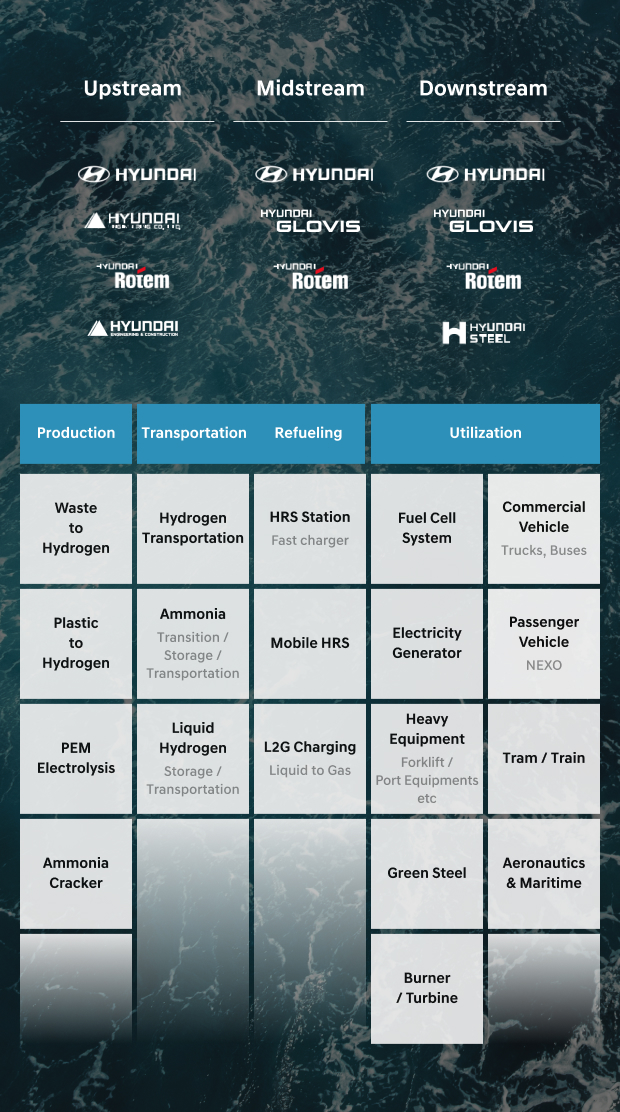
The HTWO logo embodies the message of ‘Hydrogen for Humanity’ with two interlocking Hs, symbolizing the two main pillars of Hyundai Motor Group’s hydrogen value chain business. HTWO reflects Hyundai’s commitment to hydrogen as a key solution for a cleaner future for society and future generations.


Hyundai is like no other energy company with roots deeply grounded in mobility, and like
no other mobility company with branches so far reaching into energy
sectors.
Through HTWO, Hyundai’s bold identity as an energy player builds
upon its core as a mobility company. Beyond our mobility expertise, our unmatched
cross-industry capabilities position us as a global leader in energy transition.
Leveraging cross-industry capabilities, Hyundai Motor Group is reshaping the energy
ecosystem by expanding both hydrogen demand and supply.
Together, HTWO unlocks
immense potential and accelerates the hydrogen economy, delivering meaningful benefits
for our communities, industries, and the planet.
The hydrogen society we
envision is no longer a distant future—it is becoming a reality today.
Hyundai
Motor Group remains committed to driving positive change for humanity and building a
sustainable world for generations to come.







